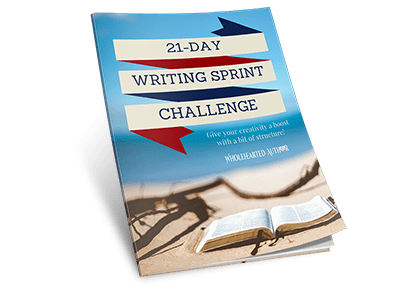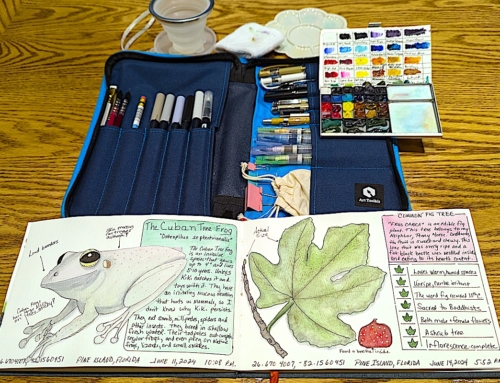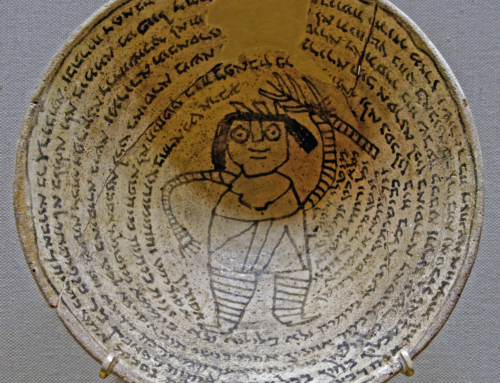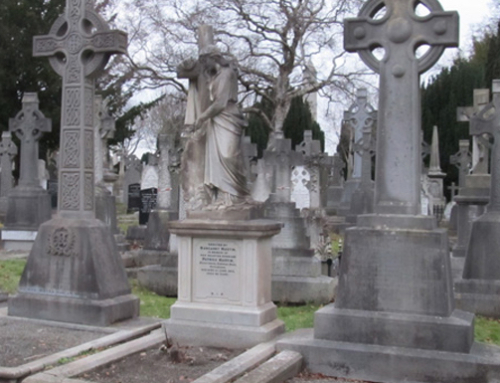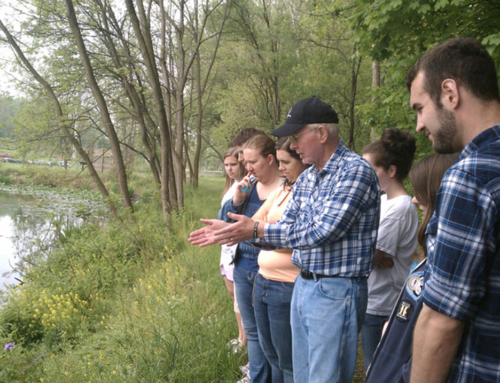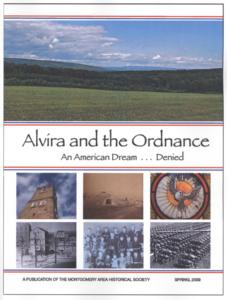 In 1942, after America entered World War II, its citizens were asked to sacrifice much for the war effort. Gasoline, sugar, butter and silk were rationed and entire communities rallied behind scrap and tire drives. One community, however, sacrificed much more: The entire village of Alvira walked from their homes and farms in the shadow of smoke and flames. Seized by the U.S. War Department by eminent domain, Alvira was bulldozed and burned and became part of an 8,500-acre secret government complex that manufactured explosives.
In 1942, after America entered World War II, its citizens were asked to sacrifice much for the war effort. Gasoline, sugar, butter and silk were rationed and entire communities rallied behind scrap and tire drives. One community, however, sacrificed much more: The entire village of Alvira walked from their homes and farms in the shadow of smoke and flames. Seized by the U.S. War Department by eminent domain, Alvira was bulldozed and burned and became part of an 8,500-acre secret government complex that manufactured explosives.
Photographs and deeds, diaries and receipts are all that remain, except for the memories of its residents, kept alive through oral tradition.
Paul C. Metzger can still recall the story of his great-grandmother’s defiance, refusing to leave until she was carried off her porch while still in her rocking chair.
A Nisbet native, Metzger, 54, now lives in rural Montoursville with his wife, Daphne. After he retired from Williamsport Wirerope, he had time to explore his family’s roots.
“Being a genealogist, I have always been interested in family history. Then, when computers became popular in the 1990s, I started doing a lot of research. The more I did, the more I found my ancestry lines coming out of White Deer Valley,” Metzger said.
His genealogical investigations prompted his exploration of the homes and farms of the White Deer Valley, including the villages of Alvira, Deckertown and Somerset.
The lost village of Alvira and a portion of the ordnance are located on 3,000 state-owned acres that are controlled by the Game Commission. The rest of the ordnance and farms were located on properties now owned or controlled by the Allenwood Federal Correctional Complex, Pennsylvania College of Technology, White Deer Golf Course and other individuals.
These private owners granted access to Metzger through his affiliation with Montgomery Area Historical Society.
Perhaps it is a rebellious streak, perhaps inherited from his immovable great-grandmother, but Metzger decided that the homes lost to the building the ordnance in White Deer Valley would no longer be shrouded in silence.
He interviewed family members, researched deeds and land warrants, studied diaries and historical archives and he created a map that identifies not just homes and barns, but families.
“Doing my research, I became more and more sensitive to the rest of the White Deer Valley. More than Alvira was affected; I can put my thumb on this map and only cover Alvira,” Metzger said. “There were 168 families living on the 8,500 acres that were either purchased or seized through eminent domain.
“Everybody is familiar with Alvira because of the ordnance and its accessibility through the Game Commission. It was a nice little town on a state road – then Rt. 44 – it was a town that never got forgotten,” Metzger said. “My great-great-grandfather, Dr. William Metzger, lived there from 1880s until his death in the 1923. My goal is to tell what happened to all of the families and farms and show how the lands evolved after the ordnance was built and what they have become now.”
He spent two years researching and developing ideas for a map and a book about the White Deer Valley, the ordnance and the families affected.
Metzger does a lot of his research at Muncy Historical Society, as well as Montgomery Area Historical Society.
Muncy has an active library and he uses its historical references on Mondays and Fridays. He could be found at the society’s museum, peering over his reading glasses as his attention flip flopped from deciphering a 150-year-old, handwritten journal and typing notes on a computer keyboard. One day, while engrossed in his ciphering, Metzger was interrupted with an opportune introduction.
Stephen C. Huddy, 60, is a retired Williamsport Area High School principal. A native of Boston, Huddy graduated from Bucknell University and the University of Pennsylvania and moved to area in 1972. He lives in Williamsport with his wife, Martha.
“I met Paul here, at the Muncy Historical Society, a little more than a year ago,” Huddy recalled. “I came wandering over looking for ordnance information. I met Linda Poulton and she asked, ‘Can I help you?’ I said, ‘Yes; I was directed here to find out more about the Pennsylvania Ordnance Works,’ and she pointed to Paul.
“Since then, Paul and I have become good friends and have worked on this project for a year and half. I call it serendipity.”
The project Huddy refers to is a book, “Alvira and the Ordnance: An American Dream Denied” ($20), that the two men co-authored. It is an in-depth sequel to a 1988 commemorative booklet Montgomery Area Historical Society published, and is a fund raiser for that organization. It is for sale by Muncy and Montgomery historical societies and Otto’s Bookstore in Williamsport.
“We’re now two and three generations removed from that event in 1942,” Huddy said. “Unless that history is preserved and researched while we have the opportunity, it is going to get lost.”
Metzger concurred: “That’s why I’m connected. I can tell my family’s stories and other families’ stories at the same time. I already had a vision of what I wanted to do, but I lacked the skill to put something together. I needed someone to help with the layout. While computer literate, I lacked the technical skills.”
In addition to the co-authored book, cartographer Metzger has produced a “Tract Map of Properties Taken for the Pennsylvania Ordnance Works.” It is a laminated, 11-inch by 17-inch map that clearly depicts the boundaries of those properties taken, their tract numbers, ownership, acres sold and amount of compensation received from the government.
“It was a two- to three-year project and the base I needed to begin the book,” Metzger said. “In 1988, there was a reunion held at Alvira and it was a huge success. The Montgomery Area Historical Society put out a mimeographed book on the town of Alvira and it spurred my interest. It kept tying in with my local history and I felt that, based upon this map, the booklet could be improved.
“To better understand and to get a feeling for the families and their land, I recreated a map using every deed of land affected. What I was able to show are the actual property owners, land amount, money received and who actually contested and fought the government.
“This map is a good resource for others looking for their families; they can identify lands with greater ease. Because of this project, the Game Commission has made signs and posts down Alvira Road that correspond with the Alvira map and book. Hiking, walking or driving will allow visitors identify where families lived. The photos in the book begin to make sense,” Metzger added.
The Amazing History of Alvira and the White Deer Valley
Alvira once had been a lovely, yet isolated, community. A close-knit community, it boasted tidy houses, white picket fences and four churches. It was secluded, remote from Williamsport to the north and Harrisburg to the south.
According to Huddy, that seclusion came crashing down, “…in the winter of 1941 – specifically after Dec. 7, 1941 – when the War Department began very furtively sending surveyors into the White Deer Valley. There were some questions from the residents about why these strangers were interested in how much acreage they had,” Huddy said. “The surveyors were less than honest; they tried to buffer the answers by saying there were plans for a new three-lane highway over the mountain to Williamsport.
“It wasn’t until Feb. 16, 1942, that the rumors finally began to dissolve. The citizenry called a meeting at the Stone Church, a community meeting place for decades. The first meeting was simply for the purpose of bringing the government officials there and presenting them with a petition signed by 400 people saying, in effect, ‘There is a rumor floating around that there might be a plant being built here; you might take our land away. Please, consider what we do here, by virtue of our farms, to help the citizenry, to help the war effort. Please don’t take our farms away.’
“That petition wasn’t responded to,” Huddy said. “Eventually, the press began to pick up on the notion that there was going to be built in this area a huge ordnance works. Now, the War Department would neither confirm nor deny that rumor until early March when a second meeting held at the Stone Church.
The Stone Church is located in the center of the White Deer Valley, and was a focal point for the communities at that time. It and six cemeteries are all that is left of Alvira and the ordnance.
“The second meeting was March 7, 1942, three months to the day after Pearl Harbor. That was when the government finally came back to hundreds of angry citizens at the Stone Church and admitted, ‘The rumors are accurate and we are going to take approximately 8,500 acres from you.’
“It was at that point, at that second meeting, that the critical comment was made to these people: ‘But you will get your land back when the ordnance is no longer needed.’
“The poignancy of this local history story for me is that on Dec. 6, 1942, these folks were living a normal life. Three months later they were told that their land would be taken by eminent domain and their lives would change forever,” Huddy said. “They had to take everything they had, everything of value, and find another place to live and another place to farm. They were gone within six weeks.
“What the government didn’t tell them was that they would never get their land back. The homes were supposed to be spared, the farms were supposed to be intact, but as these people were leaving, they could see the smoke from the Army Corps of Engineers burning and bulldozing the villages in the White Deer Valley. There was no way they would get their homes back,” Huddy said.
Within 13 months, the Pennsylvania Ordnance Works, a massive trinitrotoluene (TNT) production plant encompassed 8,500 acres in Lycoming and Union counties. More than 10,000 people were involved in building the ordnance and at the height of production, it employed 3,500 people. The ordnance operated less than one year, producing 360,000 pounds daily of TNT and shipping the raw material to weapons plants nationwide. Stockpiles of the TNT were stored in “igloos,” perhaps the most recognizable feature remaining of the ordnance. The dome-shaped concrete containments were later used by the Susquehanna Ordnance Depot to store bombs and munitions to fulfill armament needs in the European theater.
“There is a cruel irony here,” Huddy said. “The government moved people off of their lands for something that would presumably have lasted for a while. In fact, TNT production lasted only 11 months. The TNT operation was suspended on Jan. 14, 1944. Once the Ordnance Works closed, it was taken over by the Susquehanna Ordnance Depot, which operated it until 1950, when half of the land (4,200 acres) was ceded to the Allenwood Federal Correctional Complex.
“The compelling heart of the story is that, despite the fact that their land was being taken from them and there was a lot of anger, the predominant attitude on the part of valley’s residents was, ‘If this is what the country needs at this time, then I will sacrifice it.’ The promise out there, of course, was that they would get their land back at war’s end” Huddy concluded.
“Folks left with heavy hearts but a glimmer of hope that they would get their land back,” Metzger added. “But it was denied. My great-grandmother was carried her off her porch and they bulldozed her house that afternoon.
“I can almost feel their pain as I research. There are several members of my family who eventually died of broken hearts. Five generations – from the 1840s on – had farmed that land,” Metzger said. “I’ve seen a lot of photographs both pre- and post-1942; the thing that I’ve noticed is that there are no more smiling faces after 1942.”
Land that became White Deer Golf Course once belonged to his Jarrett relatives and when the youngest son returned from his military duty, he learned of his lost heritage.
“He went to his local representative who told him, ‘young man, you might as well understand right now that the government lies a lot. You’re never gonna get your farm land back.’
“The family farm was gone,” Metzger said.
During their research, the authors discovered a copy of the government’s $50 million contract to build and operate the Pennsylvania Ordnance
Works, with contract acceptance dated Feb. 11, 1942.
“We found in the National Archives that Stone and Webster, the primary building contractor, had been formally awarded the project a full three weeks before the government came to the Stone Church and said,’ Folks, we’re going to build a plant.’” Huddy said. “From what we have discovered in our research, that whole period of time was the end of innocence for these folks. They were an isolated, rural community that believed in the government and, even at the time of their leaving, most still thought they were doing the right thing, in a patriotic spirit of sacrifice. “This is leading up to a larger, more comprehensive project. We want to continue this. What we have uncovered and learned is just the tip of the iceberg,” Huddy added.
He and Metzger are drafting a second book that will examine the social history of the lost communities of Alvira and the White Deer Valley.
“Next is a much larger work. Our intent is to elaborate; for every photo in this book, we have dozens.”
Metzger said he will continue to study the deeds and titles of the properties to get to the original land warrants.
“Although it’s a tremendous amount of research, I want to keep building,” he said. “Land warrants that were originally issued and the names that identify them are so interesting. There was Cobbler’s Town and Betsy’s Risk. Where were they? It will never be a perfect puzzle; it works on paper but not always on the ground. Still, it’s neat that that I can trace my family back to there.”
Ready for a Challenge?
Have even more fun when you accept the 21-Day Writing Sprint Challenge. This process is one I use every semester with my college students, so I know it can kickstart your creativity and introduce structure to your writing schedule. When you join my Circle of Writers & Authors, you’ll receive FREE writing resources, and you’ll sign up for my newsletter. I will not sell your information, or spam you. I will send you updates about new articles and podcasts I’ve created, and projects I’m working on. You can unsubscribe at anytime. Read my Privacy Policy here.
Wholehearted Author is for you if you are …
- Starting out as a writer and could use some guidance
- Wanting to be inspired to create and publish your book
- Looking for like-minded, happy people and helpful mentors
- Hoping to turn your writing into a full-time, awesome career
- New to the concept of “permission marketing” but willing to try
CATCH THE WEST WIND
Add WEST WIND to your library!
If you love a good mystery, a romantic whodunit that will surprise you, then WEST WIND is a great addition to your ebook library.
West Wind is my third novel as an author of Contemporary Fiction, Suspense, Thriller, and Romance. It’s FREE too, when you join my exclusive Readers Group. Join today and download your free book, and as a special thank you, you’ll receive a SECOND FREE BOOK tomorrow! The giving goes on and on when you become my fan.
When you join my Readers Group, you’ll receive updates about new projects I’m working on. You can unsubscribe at anytime. Read my Privacy Policy here.


